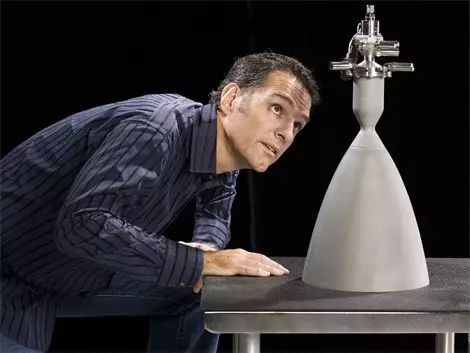正文
2008年8月2日,那是我加入公司8个月后,SpaceX第三次试射猎鹰1号运载火箭。猎鹰1号是现在的猎鹰9号的前身。
It was a defining moment for the company. Elon had a couple years prior stated in the press that his $100M personal investment in the company would get us up to 3 tries and if we couldn’t be successful by the third flight we may have to admit defeat. In addition to the pressure created by this narrative in the press, the lobbyist armies of our competitors (largest, most powerful defense contractors in the world) had been in overdrive in DC trying to undermine SpaceX and damage our credibility by painting us as too risky and inexperienced in order to protect their multi-billion dollar interests in the space launch business.
对于公司这是个决定性的时刻。伊隆几年前就对媒体说过,他个人的1亿美元投资可以支付三次试射,如果第三次还不成功,就只能认输了。压力不仅仅来自这样的背景,我们的竞争者(最大、最有势力的国防供应商)也派出大量说客,试图影响华盛顿,阻挠我们的进程,破坏SpaceX的声誉,以保全他们在火箭发射这个产业里数十亿的生意。他们说我们所做的事情风险太高,我们太缺乏经验。
SpaceX executed a picture perfect flight of the first stage (portion of the flight that gets the vehicle away from Earth’s gravity and where the vehicle experiences max Q/maximum dynamic pressure, or basically where the conditions on the vehicle are physically the harshest) clearing some of the highest risk points of mission.
第一节发射(第一节推进让火箭脱离地球引力,火箭在这一节推进中要承受最大的动态压力,所以是对火箭结构和材料上最有挑战的一节)堪称完美,很多最大的风险点都在这一节。
However, shortly after the first stage flight, immediately following stage separation (when the first stage of the vehicle detaches and falls away from the 2nd stage of the vehicle which continues its journey to space) we lost the vehicle and mission.
但是在紧接着的分离环节(火箭第一节和第二节分离,第一节坠落,第二节继续向太空航行),我们失去了火箭,发射失败了。

汤姆·穆勒
SpaceX, VP of Propulsion Tom Mueller, the modern day godfather of rocket science and one of the most brilliant scientific minds on the planet, and his team had done such a great job redesigning the vehicles engines systems that they were even more efficient and powerful than in some ways projected.
SpaceX负责推进动力部的副总裁汤姆·穆勒,当代火箭科学之父、地球上最聪明的科学家之一,带领他的团队重新设计了火箭发动机,使它比当初预计的有更大推力,也更有效率。
We turned off the first stage engine, and then proceeded to separate the vehicle stages; however when the stages uncoupled there was still a little leftover ‘kick’ or thrust in the first stage engine- so our first stage literally rear ended our second stage immediately after we had tried to separate the two sections of the vehicle. It was a devastating emotional experience.
我们关掉第一节的发动机,然后开始分离。但是分离后第一节还有一些残余推动力,导致它在分离后“追尾”了第二节。这是令人承受难受的灾难性时刻。
I stood around with the then 350 or so employees, and we cheered the vehicle on as it took off, and as we were watching the mission clock and knew that the stages were about to separate - the video feed was cut. The company is on a 20 second viewing delay from the mission control team as we are being projected the external press feed which is delayed in case of major mission anomalies. So when we lost video, we knew something had gone wrong in a big way.
我和350多个员工站在一起,我们在起飞时欢呼,我们盯着时钟知道第一节分离的时间要到了,这时候视频断了。我们看的是和提供给外界媒体一样的视频,这个视频比控制小组看到的延时20秒,好让控制小组有时间对重大变故做出反应。所以视频中断的时候,我们就知道大事不妙了。














